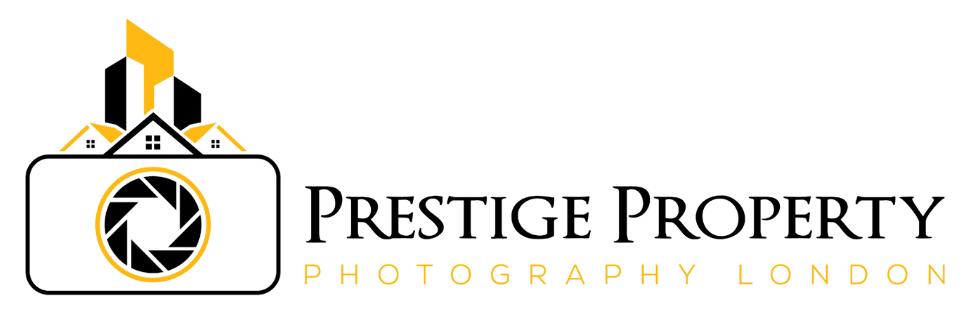Are you a seller or agent in the UK looking to maximize the potential of your property? Look no further than this comparison of Virtual Staging and Traditional Staging. We have compiled a comprehensive analysis of the advantages and disadvantages of both, so you can make an informed decision.
Time is crucial, and virtual staging offers a faster and more cost-effective solution compared to traditional staging. With just a few clicks, you can transform an empty space into a fully furnished masterpiece without breaking the bank.
Visual appeal and flexibility also play a significant role. Virtual staging offers endless possibilities when it comes to design choices and customization. Whether you prefer modern minimalism or classic elegance, virtual staging allows you to showcase your property in the best possible light while giving potential buyers the freedom to envision themselves living there.
Accessibility is another advantage. Virtual staging enables sellers and agents to reach a wider audience through online platforms. Additionally, there is no need for maintenance as digital furnishings require no upkeep.
Lastly, buyer perception is crucial for closing a deal. By creating emotional connections through stunning visuals, virtual staging has been proven to grab buyers’ attention and ignite their desire to own the property.
Continue reading to make the right choice for all your selling and agent needs in the UK. Embrace the freedom that comes with exploring these innovative staging techniques!
Cost and Time Efficiency
Virtual staging offers a convenient and cost-effective solution for sellers and agents in the UK. It allows properties to be presented without the expense of buying or renting furniture and eliminates the lengthy process of physical staging. This not only saves money but also reduces the time needed to coordinate deliveries and arrange furnishings. Through virtual staging, sellers and agents can effortlessly transform vacant spaces into appealing living areas, improving the attractiveness of their properties with minimal cost and time investment.
Visual Appeal and Flexibility
Virtual staging provides a convenient solution for sellers and agents to customize the presentation of a property, showcasing different furniture styles and layouts. This flexibility enables them to attract a wider range of potential buyers with diverse tastes and preferences.
In contrast, traditional staging offers buyers a genuine and tangible experience, allowing them to imagine themselves in the space. This can foster a stronger emotional connection between the buyer and the property, assisting them in making a more informed decision.
Virtual staging enables effortless customisation, enabling sellers and agents to display various furniture styles and layouts to attract a broader selection of prospective buyers.
Virtual staging allows for easy customisation, giving sellers and agents the opportunity to experiment with various furniture styles and layouts to appeal to a wider range of potential buyers. This flexibility enables them to tailor the property to different tastes and preferences, increasing the chances of attracting interested buyers.
Whether it’s modern and minimalistic or cosy and traditional, virtual staging offers a plethora of possibilities for customisation.
By utilising virtual staging to showcase multiple furniture styles and layouts, buyers of all demographics can be targeted more efficiently. For instance, if you’re aiming for a younger audience who’s fond of contemporary designs, you can stage the property with sleek furniture pieces and modern decor. Alternatively, if you’re targeting a more traditional taste, you can highlight classic furniture arrangements that create a sense of warmth and familiarity.
In addition, virtual staging allows for convenient adjustments based on feedback from potential buyers. If certain styles or layouts aren’t resonating, you can easily make changes without the expense or hassle of physical staging. This versatility guarantees that your marketing efforts remain effective throughout the selling process.
Overall, virtual staging can be used to customise furniture styles and layouts according to buyer preferences, giving sellers and agents an advantage in appealing to a wider range of potential buyers. The ease of customisation offered by virtual staging offers the freedom to showcase properties in ways that connect with different audiences, while keeping costs low and providing flexibility during the selling process.
Traditional staging offers a tangible and realistic experience for buyers, enabling them to easily imagine themselves in the space.
When it comes to traditional staging, buyers have the opportunity to physically experience and imagine themselves in the space. This tangible experience allows them to truly understand the layout, size, and flow of a property. They can touch and feel the furniture, walk through each room, and get a sense of how they would use the space. This level of interaction helps buyers easily visualize themselves living there.
Traditional staging provides a realistic representation of what the property could look like when furnished, giving buyers a clear idea of its potential. It allows them to imagine their own personal belongings in each room and decide if it fits with their lifestyle and preferences.
Buyers can see how much space is available in each room. Physical staging enables them to assess if their existing furniture will fit in the space. Traditional staging offers a more accurate representation of how the property may look once they move in.
By experiencing these aspects firsthand, buyers can make more informed decisions about whether a particular property meets their needs and desires.
Accessibility and Reach
Despite physical limitations, traditional staging allows sellers and agents to reach a larger audience and potentially attract more buyers.
By arranging furniture, decor, and other elements in a home, traditional staging offers potential buyers the opportunity to experience the space in person. This hands-on approach provides an accurate representation of the property, which helps buyers imagine themselves living there more easily.
Furthermore, traditional staging has a wider market reach compared to virtual staging. It appeals not only to individuals who are comfortable with technology, but also to those who prefer a more immersive experience when searching for a house. This broader accessibility can result in increased interest from various buyers, hence increasing the likelihood of finding the right buyer for the property.
Maintenance and Longevity
When it comes to maintenance and durability, virtual staging has clear advantages. It requires minimal effort and can be easily altered when needed.
On the other hand, traditional staging may require frequent maintenance and adjustments to keep its appeal, especially for properties that are on the market for a long time.
Therefore, if you prefer a hassle-free option that allows for easy modifications, virtual staging is worth considering.
Virtual staging requires minimal maintenance and can be easily updated or modified as necessary.
Virtual staging offers the advantage of minimal upkeep and easy updates or modifications. Compared to traditional staging, you don’t have to constantly maintain the furniture and decor. There is no need for physical maintenance like dusting or repairing any damages. Plus, if you want to make changes to the staging, it can be done quickly and easily with just a few clicks.
You can switch out furniture styles, change wall colours, or add/remove accessories without any hassle. This flexibility allows you to experiment and find the best presentation for your property with no limitations.
Traditional staging may require regular maintenance and adjustments to keep the space looking its best, especially for properties that are on the market for an extended period.
To maintain the highest standard of presentation for a property on the market for a longer period, it is necessary to regularly maintain and make adjustments to a traditionally staged home. Statistics show that properties that remain on the market for a long time need more frequent updates.
Traditional staging involves using real furniture and decorations to create a welcoming atmosphere for potential buyers. Therefore, it is important to regularly maintain everything to keep it in good condition. Furniture may need to be cleaned or repaired, and decorations may need to be replaced if they become worn out or outdated. Additionally, changes may be necessary as buyers’ preferences change over time.
By regularly maintaining and making adjustments, you can ensure that your traditionally staged property continues to captivate potential buyers throughout its time on the market.
Buyer Perception and Emotional Connection
Virtual staging may lack the personal touch and warmth of traditional staging, potentially impacting your connection to the property.
Traditional staging offers a more immersive and sensory experience, helping you to imagine yourself living in the space and forming an emotional attachment.
The lack of physical furniture and decor in virtual staging could make it more difficult for you to build that same emotional connection.
Virtual staging may lack the personal touch and warmth of traditional staging, potentially impacting the emotional connection that buyers feel towards the property.
Despite the convenience of virtual staging, it may fail to evoke the same emotional connection and warmth that traditional staging can provide. One drawback of virtual staging is the lack of personalisation. While digital tools can create realistic images of a property, they often lack the personal touch that comes with physical staging. Buyers may find it harder to imagine themselves living in a space when it feels impersonal and detached.
Furthermore, without the cosiness that traditional staging brings, buyers might struggle to form an emotional connection with the property. Emotional connections play an essential role in buyer decision-making, influencing how buyers feel about a home and if they see themselves living there. Thus, sellers and agents should carefully consider whether virtual staging will effectively convey the desired emotions to potential buyers.
Traditional staging creates a more immersive and sensory experience, enabling buyers to envision themselves residing in the area and developing an emotional connection.
Traditional staging provides a captivating and sensory experience, allowing potential buyers to imagine themselves residing in the property and forming a strong emotional connection. Unlike virtual staging, which may lack a personal touch, traditional staging creates a tangible ambiance that stimulates the senses.
By strategically arranging furniture, accessories, and decorations, traditional staging presents prospective buyers with a realistic portrayal of what it would be like to live in the property. The physical objects enable individuals to engage with the space on a more instinctive level, enhancing their ability to envision themselves residing there. This immersive experience fosters an emotional bond as buyers can envision themselves hosting gatherings or unwinding in the living room.
The tangible nature of traditional staging adds authenticity and depth to the process of purchasing a home, making it easier for buyers to imagine their future lives within these spaces.
Frequently Asked Questions
Are there any extra expenses associated with virtual staging that sellers should be aware of?
There may be additional costs associated with virtual staging that sellers should be aware of. These can include fees charged by virtual staging companies for their services, as well as any expenses related to editing or improving the virtual images. It is essential for sellers to consider these potential costs before opting for virtual staging.
Furthermore, they may need to invest some time in providing high-quality photographs and detailed information about their property to ensure the virtual staging process is successful.
How long does it usually take to complete virtual staging for a property?
The duration of virtual staging for a property can vary depending on various factors. These factors include the size of the property, the complexity of staging requirements, and the availability of resources.
Typically, virtual staging can take anywhere from a few hours to a couple of days. It is essential for sellers and agents to consider these factors when choosing virtual staging services to ensure they can meet their desired timeline for effectively marketing their property.
Can virtual staging be personalised to accurately represent various interior design styles?
Yes, virtual staging can be tailored to showcase various interior design styles. There is a vast array of choices at your disposal, including furniture styles, colour schemes, and decorative elements. Whether you favour a contemporary, classical, or diverse aesthetic, virtual staging empowers you to present your property in a manner that appeals to potential buyers with diverse preferences.
This degree of personalisation ensures that your virtual staging effectively mirrors the intended interior design style, yielding optimal impact.
Are there any restrictions on the types of properties that can benefit from virtual staging?
There are certain restrictions on the types of properties that can benefit from virtual staging. For example, if a property is in a state of disrepair or has significant structural problems, virtual staging may not be able to effectively demonstrate its potential.
Furthermore, properties with unconventional floor plans or unique architectural elements may not translate well into virtual staging. Nevertheless, the majority of properties in good condition and with standard layouts can take advantage of the benefits of virtual staging, including cost-effectiveness, flexibility, and the ability to reach a larger audience.
How long can virtual staging images be used for marketing purposes before they need to be updated?
The lifespan of virtual staging images varies depending on changes to the property or market trends. It is suggested to update these images every 6-12 months to ensure they accurately represent the property and maintain an attractive look for potential buyers.
Doing so allows for flexibility in marketing and adapting to any changes that may occur, maximizing the effectiveness of their marketing efforts.











